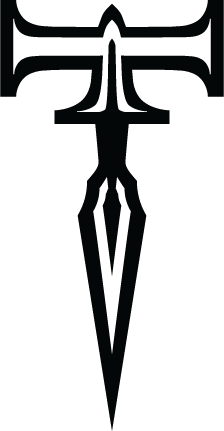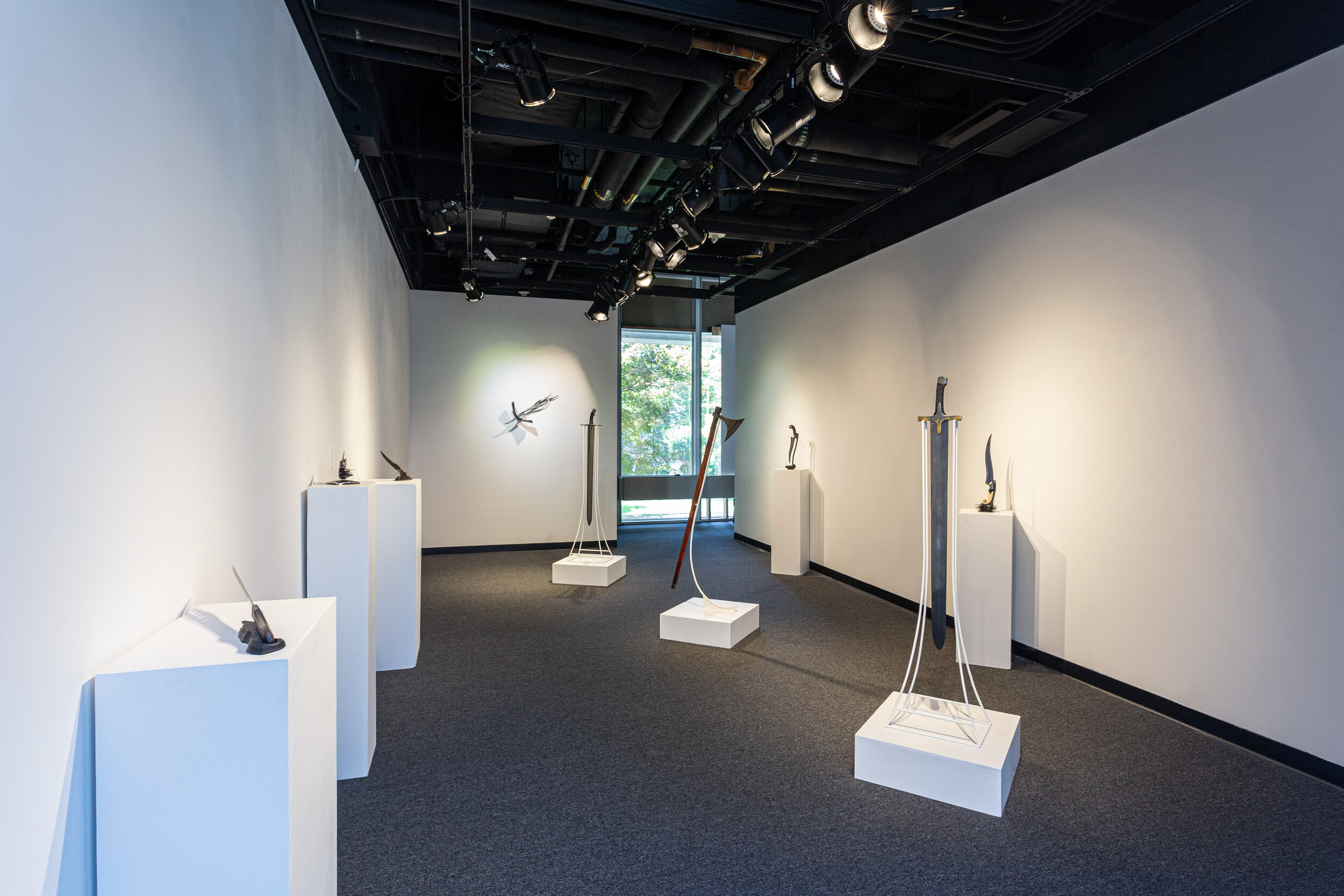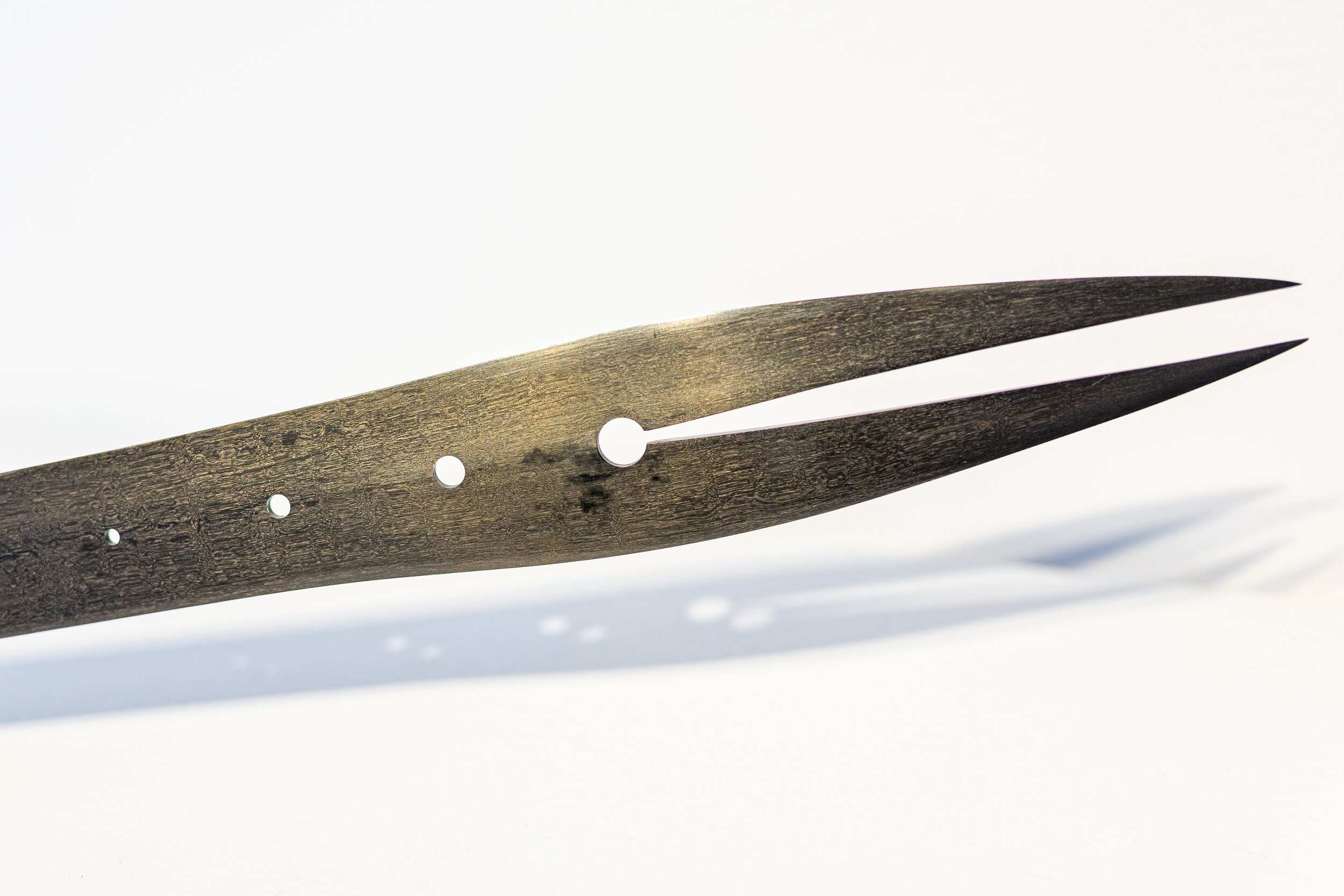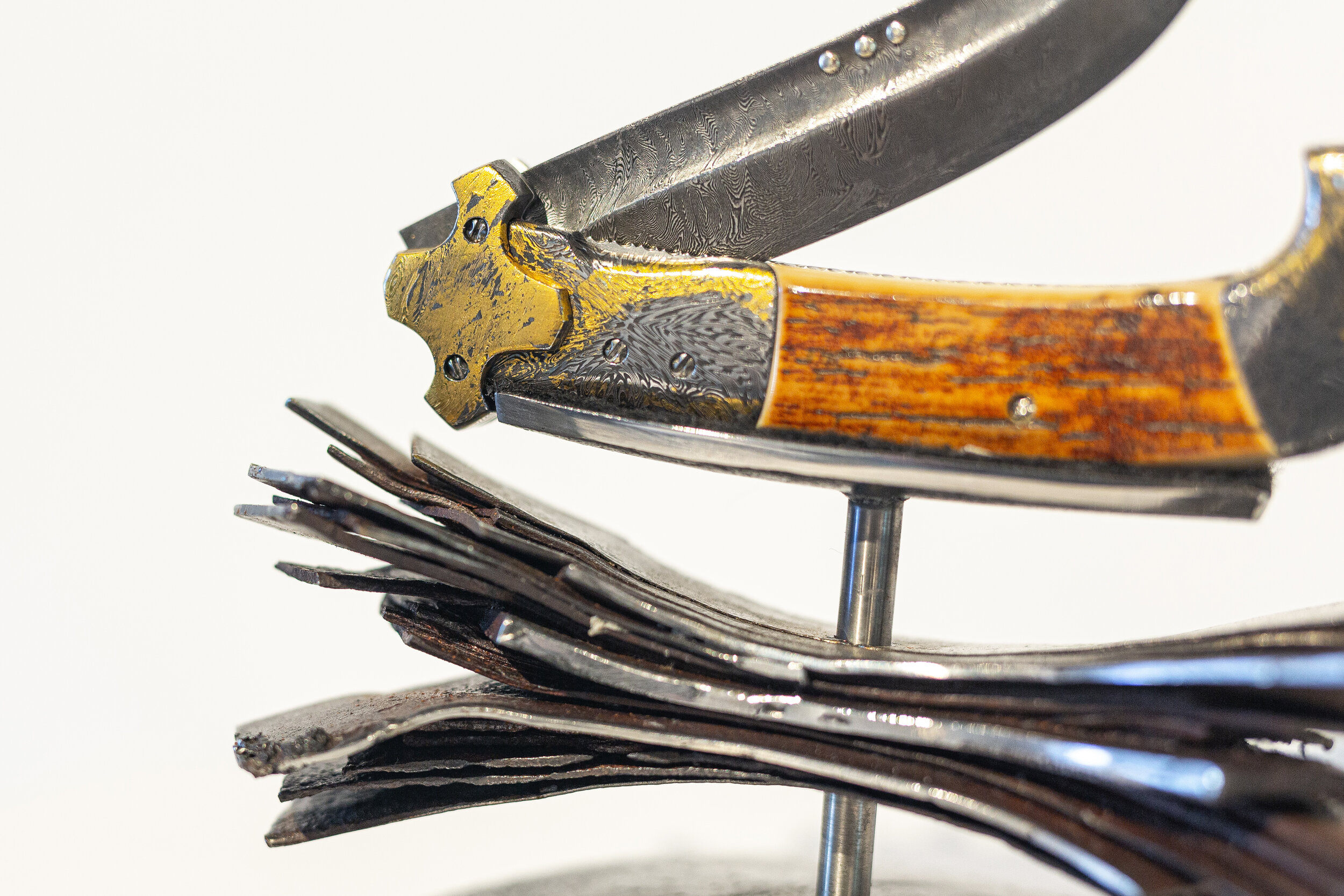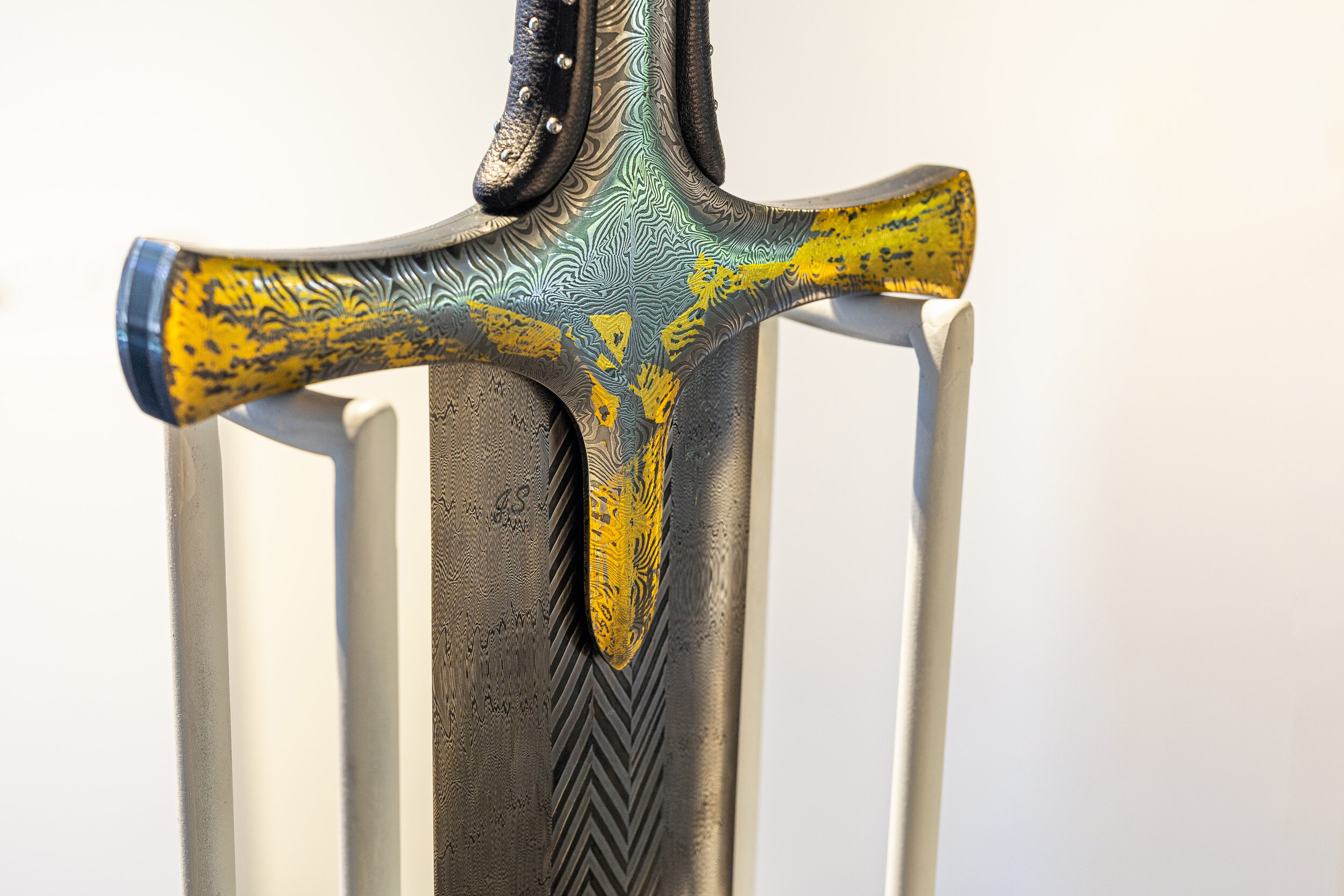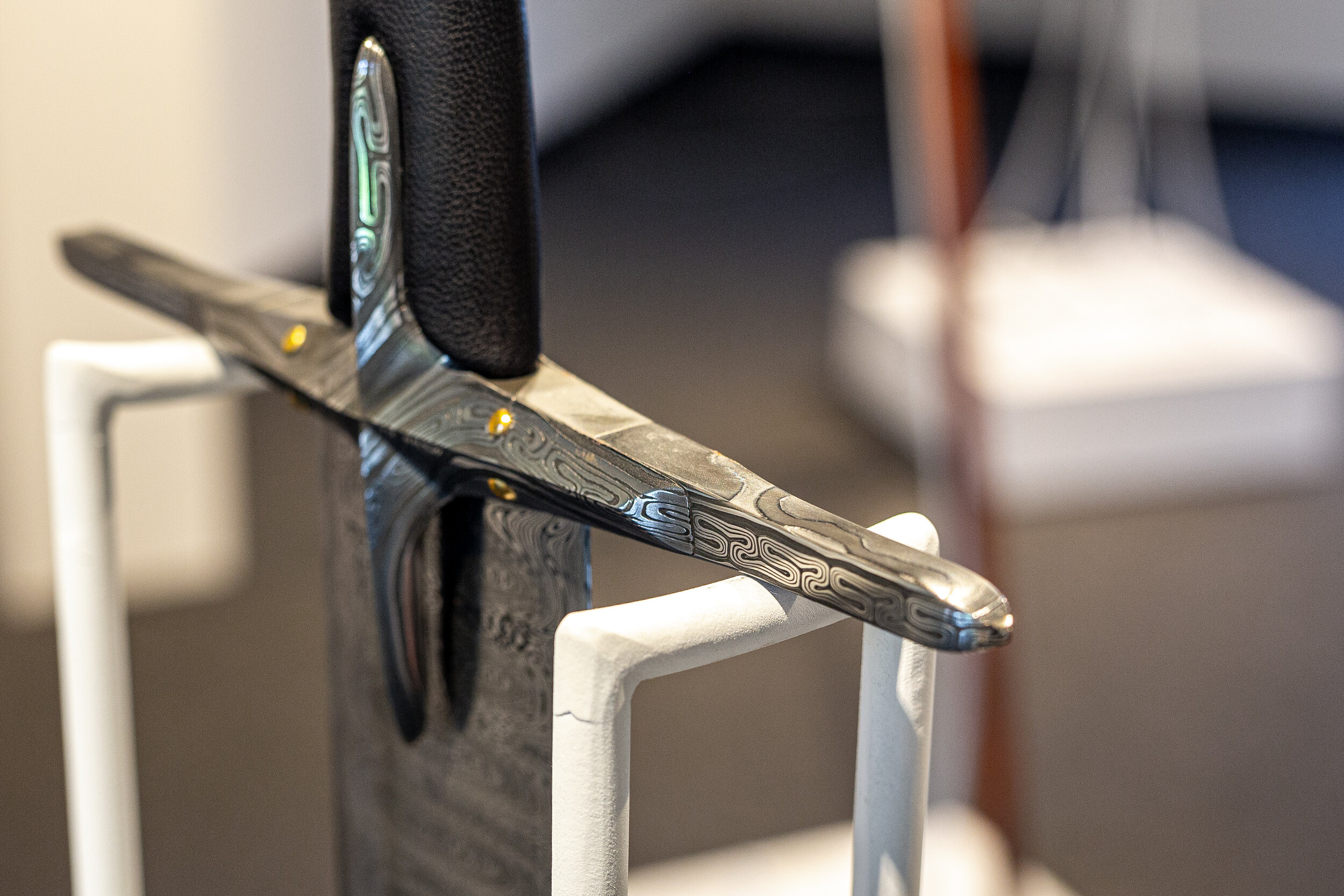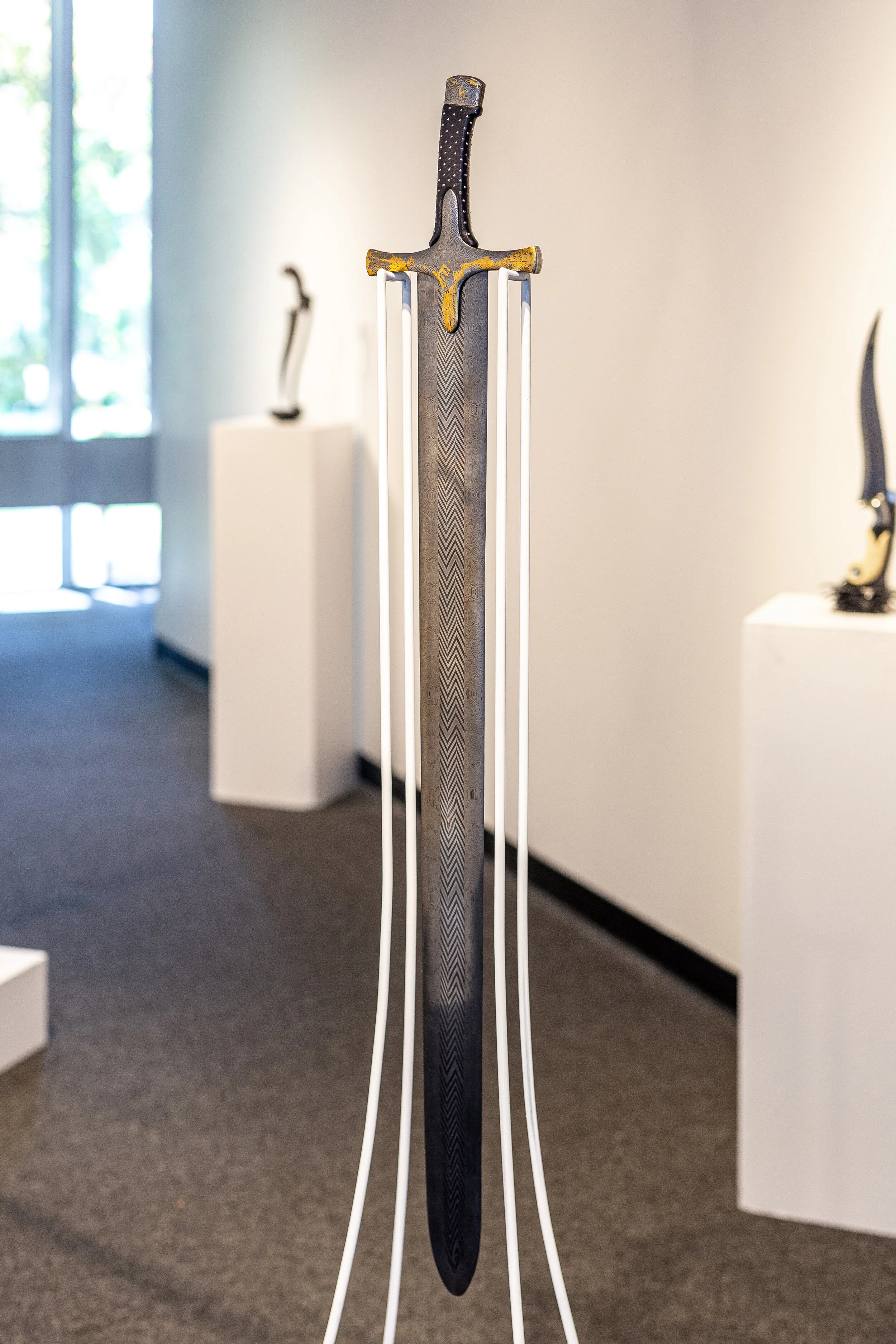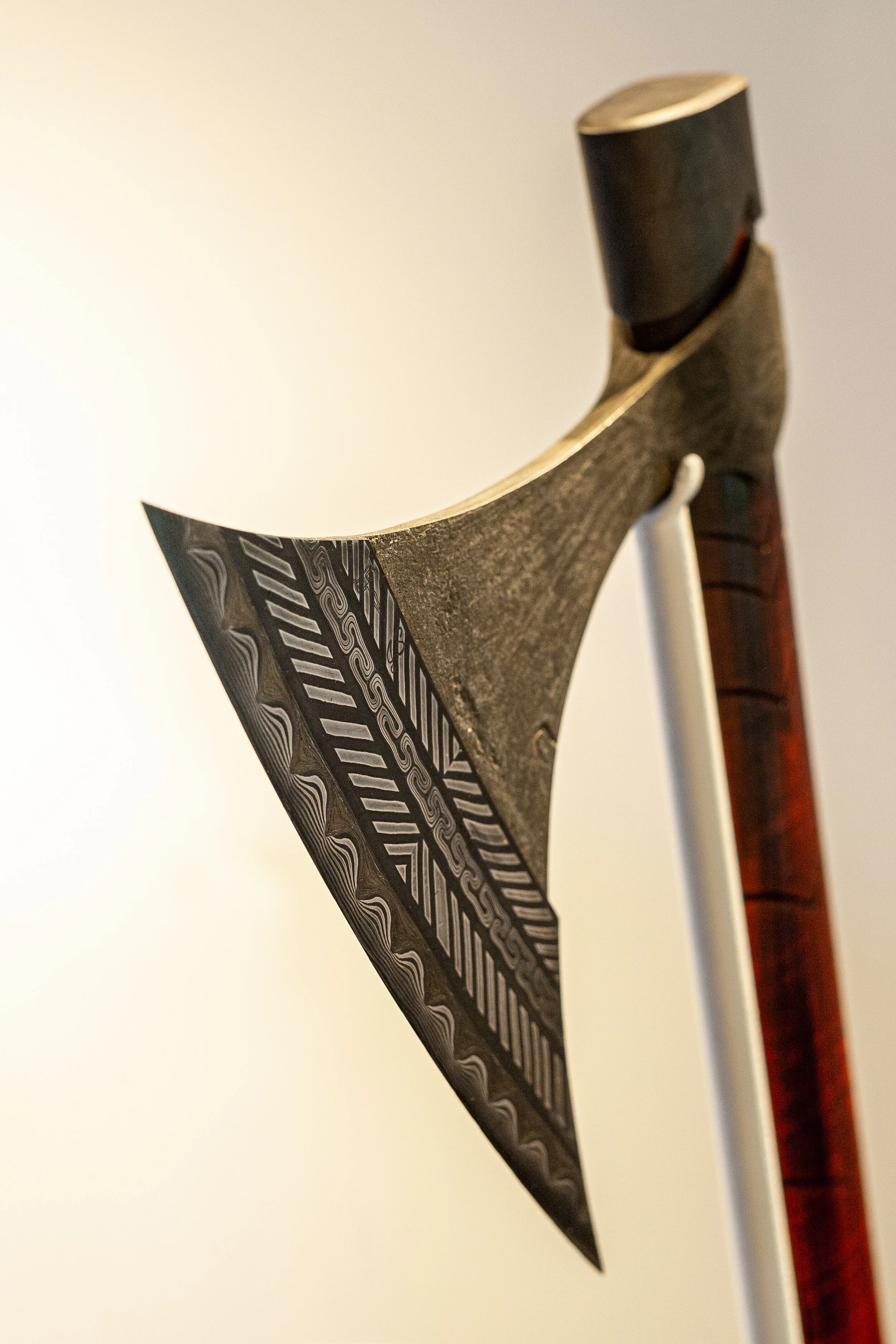“Bound by Iron”
“Bound by Iron” is an exploration of the history of Damascus Steel and its relationship to Contemporary Craft and Fine Art. The goal of my work and my research is to add to the contemporary context of Pattern Welding and Crucible steel and to our historical knowledge of what was created with it.
Damascus steel and its relationship to weapons and the ritualistic nature imbued on them has led me to produce this series of weapons from across time. However, they have been produced in such a way to reference their original forms, while not being direct representations of their ancient counterparts. To explore these things from a contemporary standpoint is to give life to and honor these ancient people whose innovation led us to where we are today.
Many cultures have also regarded weapons themselves as sacred, and many originals survive today because of humankind’s tendency to revere not only the wielder but also the object itself; sometimes the weapon is even imbued with its own soul or personality. Certain weapons took on mythological contexts of their own, based on the ritual mysticism of steel. Named blades safeguarded their bearers, inscribed with holy texts of protection or righteousness. The people who wore and used these weapons depended on them for their position, authority, and survival. One of these weapons could represent such a powerful symbol of authority that the simple act of carrying it could imbue its wielder with an aura of status and import. A weapon might have seen generations of use within families of both high and low status, adding to its ritual importance or to the perceived good fortune of a group, inspiring respect, and awe. Family weapons were frequently abducted, ransomed, or used as bargaining chips within major treatises and war.
Although people revered the power these weapons could yield within a society, the same objects were certainly being used to strip that power and authority from others. Those on the receiving end were put in the opposite position, and they would certainly have seen Damascus steel weapons as dark, hard, oppressive, and authoritarian. No other class of object comes with these paradoxical connotations of glorious righteousness and primal barbarism built into its very nature.
Throughout my work, I have used a modern approach to materials that have given me the freedom to combine processes from around the globe, only available to me in this age of infinite information, and this is what keeps my work connected to the world of today. This also hastens my own processes of innovation and understanding. My ability in pattern welding far exceeds the ancients in terms of pattern complexity and the predictability of outcomes. Although ancient steel had higher plasticity, making some ancient patterns nigh unachievable in modern steel. With modern metallurgy and machinery, I am able to replicate and innovate at rates unachievable by entire workshops of the distant past. Crucible steel, on the other hand, was better understood in ancient times than it is now, so the modern approach to that material is still limited and confusing, but I have had some success working with that as well. The menu of processes and materials that I have at my disposal spans the entirety of human history, ranging from modern precision machining to the use of ancient fossilized mammoth ivory like that of the 40,000-year-old Vogelherd Cave sculptures.
As these works reference hypotheticals and the non-existent, they become objects of no particular time or place; their original purpose is known and respected, but almost never obeyed. The edged weapon has no role in the daily modern world, and while it can still be found in rituals around the globe, it is not the feature of daily life that it once was. These blades can now be appreciated in their many roles, free of the moments and emotions they formally existed in. Protection, projection, violence, righteousness, or fear, these primal reactions are understood implicitly, although now quietly inactive, like a retired prizefighter.
As time marches onward, and the forged edge has been left behind, steel still impacts the daily life of all of humanity. These objects share the aesthetics of the most ancient to the most contemporary and are some of the few tangible connections to the ancient world that humanity still has. Weapons taken out of their own time and carefully created in ours, provide a window into the past and the history of steel that is accessible in a handheld object.
